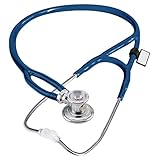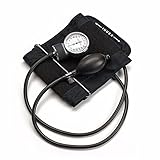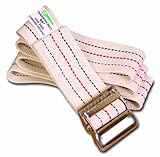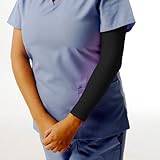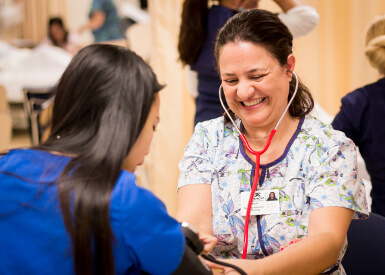
How to Become a Certified Nursing Assistant
I enjoy my work as CNA (Certified Nursing Assistant) and am glad I invested my time and money to step up in my career path. If you enjoy helping others, have a compassionate spirit, want to make a difference in someone’s life or are looking for an entry point into a career that’s uses your natural caregiving skills, then a Home Health/Personal Care Aide or CNA position may be your calling.
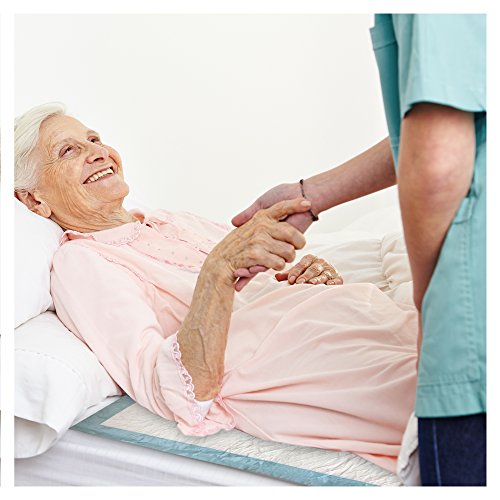 During my years as a Home Health Aide I assisted many senior and disabled clients with their ADLs (activities of daily living). (Get to know this term as it will become the basis of all you do in this field.) I have helped clients bathe, prepare meals, assist them in walking, sitting and standing, get dressed, use the toilet, do laundry and vacuum their house. It may me feel good knowing I was able to improve the quality of their lives – if only a little bit. What I didn’t expect is that my life would become enriched by serving these people as well. My clients came from all walks of life with the most interesting stories of struggles, triumphs, failures, achievements, love, loss and a conveyance of life in a time without our current technologies and modernization.
During my years as a Home Health Aide I assisted many senior and disabled clients with their ADLs (activities of daily living). (Get to know this term as it will become the basis of all you do in this field.) I have helped clients bathe, prepare meals, assist them in walking, sitting and standing, get dressed, use the toilet, do laundry and vacuum their house. It may me feel good knowing I was able to improve the quality of their lives – if only a little bit. What I didn’t expect is that my life would become enriched by serving these people as well. My clients came from all walks of life with the most interesting stories of struggles, triumphs, failures, achievements, love, loss and a conveyance of life in a time without our current technologies and modernization.
While I enjoyed my time as a Home Health Aide I decided to learn more skills so that I could expand my care from basic ADLs to supporting those with medical complications, such as clients with catheters, hypertension and diabetes where blood pressure and sugar levels needed to be taken and monitored and those recovering in skilled nursing facilities. This is the job of a CNA. While ADLs still comprise the core of our work, CNAs are trained to care for those who may be bed-bound, need care and monitoring of advanced illness, injuries and disease conditions and provide hospice services for those at the end of their life.
If you want to step up your caregiving skills, work with a broader range of clients and have job that is always in demand then training for a CNA career be a good fit for you. Of course I am biased and will encourage a well rounded care program as a CNA. Let’s explore what it takes to be a CNA.
What is the Difference Between a CNA1 and CNA2 Position?
You might see the CNA position split into two levels – CNA1 and CNA2. The real difference between the two is the CNA2 training and certification prepares you for work in a hospital setting. In order to be a CNA2 you need to first train and certify as a CNA/CNA1. Once you have certified as a CNA/CNA1 you will be able to work in skilled nursing facilities, assisted living facilities, in group home setting and in client’s home. If you goal is to work in a hospital setting you will need the extra training in more complex skills and additional certification. Many choose to work as a CNA/CNA1 for a while to get their feet wet, so to speak, and then make the decision to move up to a CNA2 position for hospital work.
What are ADLs?
This is a term anyone providing care should know. Whether you are a family member looking for a caregiver for a loved one or someone entering the healthcare field ADLs will be the basis for determining the level of care required. ADLs are activities of daily living. They are the core activities all of us need to perform on a daily basis. Most organizations evaluate a client on six (6) core functions with a seventh for memory impaired clients:
- Bathing and Grooming
- Dressing and Undressing
- Meal Preparation and Feeding
- Functional Transfers
- Safe Restroom Use and Maintaining Continence
- Ambulation
- Memory Care and Stimulation (Alzheimer’s and Dementia)
Determining the level of care needed in each of the ADLs requires a physical measurement of competency in each of the ADL areas. For instance it is good to know that someone needs help with bathing and grooming but it is better to know that the client can enter and exit the shower but cannot wash themselves. Many agencies, including Medicaid and Medicare, will have a checklist of the ADLs and a rating of the competency in each category to determine how many of hours and what kind of care if required for your loved one. The categories will include:
- Requires no assistance
- Some assistance required
- Total assistance required
- Not applicable
Some checklists will be more granular. There will be additional considerations before the final level or care is decided, but the ADLs will drive most decisions on the type and level of care required.
What are the Responsibilities of a CNA?
Communication – CNAs first must be people-oriented and communicate well with the client, their families and agency personnel as applicable. They must also be great communicators with their nursing supervisor’s as CNAs are responsible for monitoring and reporting any changes in a client/patient’s condition.
Basic and Advanced ADL skills – CNAs must master the basics of ADL skills. These are the focus of professional training and the certification exam required to become a CNA. These will include tasks such as:
 Bathing and dressing clients – includes a bed bath
Bathing and dressing clients – includes a bed bath- Serving meals and assist with eating
- Taking vital signs (blood pressure, temperature, pulse)
- Turning clients/patients who are bedridden (to avoid sores)
- Assist in waste elimination – provide and empty bedpans, empty catheters, clean client after BM
- Provide client/patient transfers – move from wheelchair to bed, wheelchair to shower, bed to chair, etc.
- Answer client/patient calls
- Clean and sanitize client/patient areas
- Change bed sheets – with and without a client/patient in bed
- Maintain stock in supply rooms
- Collect information on condition, vitals, treatment plans from nurses, doctors and therapist
- Assist in range of motion (ROM) exercises
Recording – CNA must be detail oriented to record daily information about each client/patient. This will include knowledge of electronic health software for tracking vital signs data, treatment information, medications, elimination tracking, etc. that are shared with other health staff involved in the client/patients care. Must abide by any agency, state and federal regulations (such as HIPPA) regarding tracking, recording and sharing of client/patient information.
Transportation – may be required to escort client/patient to medical or therapy appointments. This could be from home, within a group setting or in a hospital setting
Other – Note that not all facets of a CNA’s work is glamorous. You will need to clean up a client/patient after they soil themselves, will completely wash a person of the opposite sex, may need to change dressing on open wounds, clean up after vomiting incidents and other graphic work.
What Type of Training is Required?
Most CNA training is two to four months in length and is conducted at a local community college or specialized training facility. You will need to complete a certain amount of in-class instruction followed by a certain amount of clinical training. The hours required vary state by state so be sure to check with your state’s nursing accreditation site for requirements. Here is a great site to get started in locating training programs, testing information and requirements by state.
Training
I live in Oregon so I will use our requirements as a sample. I took my training at a private state-approved facility that only focuses on CNA training. It cost me about $1,000 but could run up to $1,300 at the local community college program.
Oregon requires CNA to complete 80 or more hours in classroom training and 75 or more hours in a clinical training setting. Oregon and 18 other states require a minimum of 75 hours for CNA training, the other 31 states have a range of a minimum of 80 to 180 hours. Missouri requires 175 hours and Maine tops the list at 180 hours. These hours include the state-required number of clinical hours, ranging from 16 to 100 hours. (1)
Before I got started I had to provide:
- Proof of high school graduation or GED
- Demonstrate I can read, write and speak English (as the program and tests are conducted in English only)
- American Heart Association BLS for Health Care Providers CPR card
- Copy of tuberculosis (TB) test results (you will be working in a skilled nursing facility)
- Must pass a Criminal Background Check and a 10-panel Drug Screen test
- Provide proof of two doses of Measles, Mumps and Rubella vaccine, or proof of immunity via a blood titer
I needed to pass the final classroom exam with 75% or better and have provided my own supplies.
Stethoscopes (basic kind)
Sphygmomanometer (manual blood pressure)
Gait Belt (normally the non-looped kind)
Pulse Oximeter
Training Material
Medical Scrubs (color combinations are dictated by your program)
Nursing Shoes (slip and skid-proof, preferably leather uppers)
Tattoo Covers (if applicable to your program)
Exam
When a nursing assistant passes both the classroom and clinical training instruction they can schedule themselves for the state exam. It cost me $106 for the exam and another the Oregon State Board of Nursing (OSBN) charges another $65 to conduct its own background check prior to granting approval to take the exam. When approved you will be given the test date and time for your exam
 Oregon has approved HEADMASTER, LLP to provide the certification examination and scoring services for
Oregon has approved HEADMASTER, LLP to provide the certification examination and scoring services for
nursing assistant examinations. You will be told during your training who is responsible for administering and scoring your state exam. Once you have this information go to their website, download their testing handbook and make sure you study the skillset and tasks that will be covered in the exam. (Here is the handbook for Oregon.) Be sure to practice, practice and practice until you are very comfortable performing them in front of panel of judges. There are also practice tests, workbooks and online tools available to help prepare you for the exam too.
Make sure you get enough sleep the night before, eat a good meal and arrive early to your exam. You want to be sharp, alert and ready to ace the exam. In Oregon the exam consists of a written portion (up to 90 minutes for the 80 question knowledge test) and a skills portion where a random selection of skillsets are chosen for you to perform (one of the mandatory five skills and 2-3 randomly chosen skills to accomplish in 45 minutes). You do not need to get a 100% to pass. Your state will specify the minimum score required to pass for certification. You results will be made available, usually through the testing administration website or from you instructor, and hopefully you will all be celebrating the success of your certification. Congratulations – you are now a Certified Nursing Assistant!
Am I Done?
As with most professions that are licensed you need to maintain that license. It is the same with a CNA. Your CNA license will be valid for a period of time (in Oregon it is two years) and usually expires at midnight before you birthday. You should get a renewal notice six to eight weeks before expiry so make sure you keep you mailing address current at your licensing registry. There is usually a fee for renewal. In Oregon is it $60.
In order to renew the license you will probably need to demonstrate work hours in the field under the supervision of a Registered Nurse. In Oregon we need to complete 400 work hours over a two-year period and submit certification that the work was performed under the supervision of a Registered Nurse. Again, check your state for renewal requirements.
You should be able to check the status of your license or anyone else licensed in your state through the license registry. You will also be able to see if any licensed professional has any disciplinary actions and if they might be licensed to dispense medications. (You can see our registry here.)
Would you Choose to be a CNA Again?
 Absolutely! It’s all about building rapport with your client(s) and knowing that you made a difference in improving someone’s quality of life. Sure, there are plenty of moments when it’s not glamorous, liking cleaning up after a soiling or trying to calm an agitated client, but seeing the happy face of someone who is now sparkly clean or can take a few steps with your help after being bed-ridden for a while is well worth it. A “thank you” or hug from a caring family member for taking such good care of their loved is validating. I can’t even begin to explain how much richer my life is by getting to know my client’s stories, their past, their dreams and the advice they have to pass on.
Absolutely! It’s all about building rapport with your client(s) and knowing that you made a difference in improving someone’s quality of life. Sure, there are plenty of moments when it’s not glamorous, liking cleaning up after a soiling or trying to calm an agitated client, but seeing the happy face of someone who is now sparkly clean or can take a few steps with your help after being bed-ridden for a while is well worth it. A “thank you” or hug from a caring family member for taking such good care of their loved is validating. I can’t even begin to explain how much richer my life is by getting to know my client’s stories, their past, their dreams and the advice they have to pass on.
I truly hope I will see you join the ranks of CNA professionals soon. You will not regret the investment you have made in career, your life and the lives of your clients!
Please drop me a line if you have any questions or comments on how to become a Certified Nursing Assistant.
References:
- (1) CNA.Plus Academy – CNA Certification Requirements
- Oregon State Board of Nursing (OSBN)
- Oregon State Board of Nursing – License Verification Search

